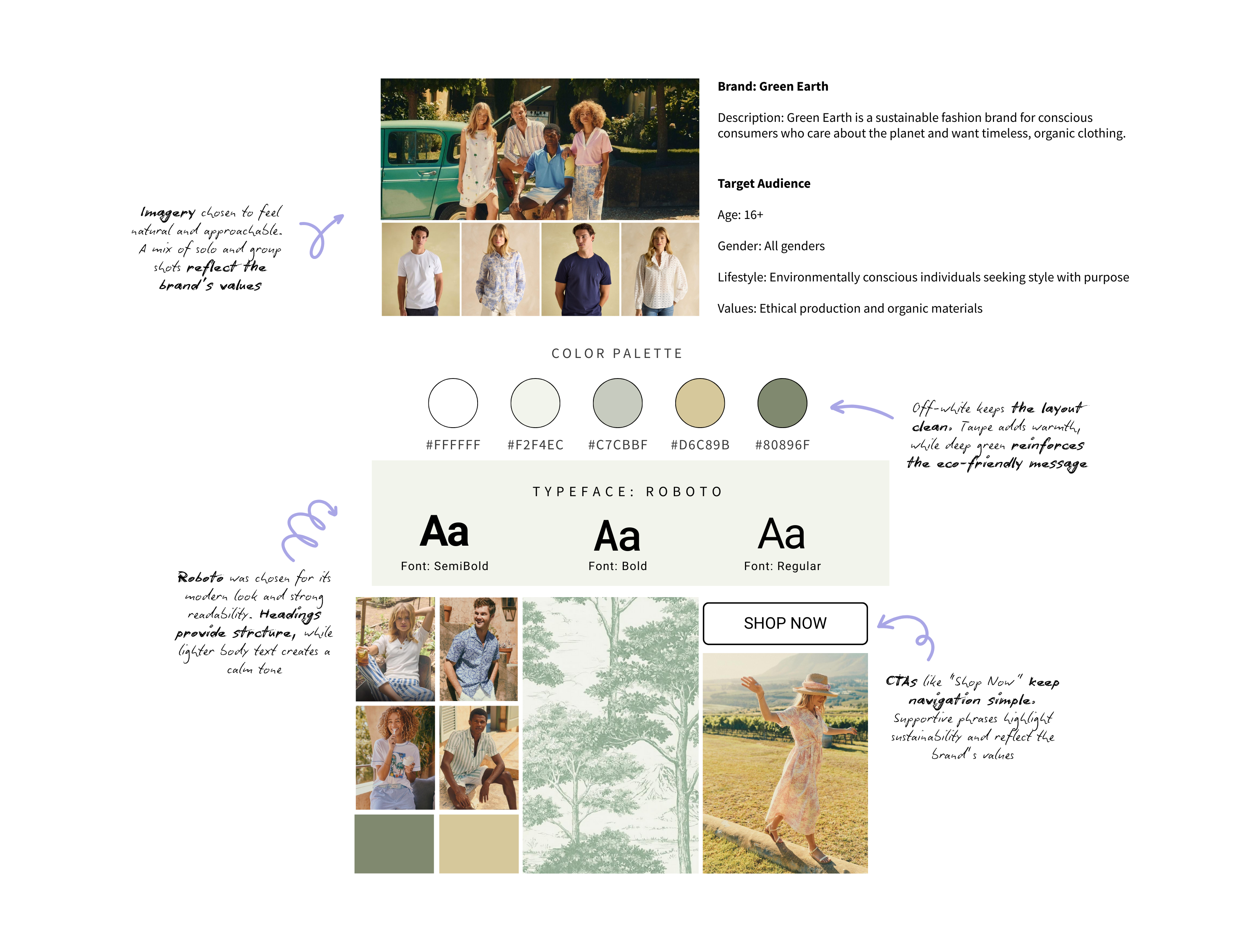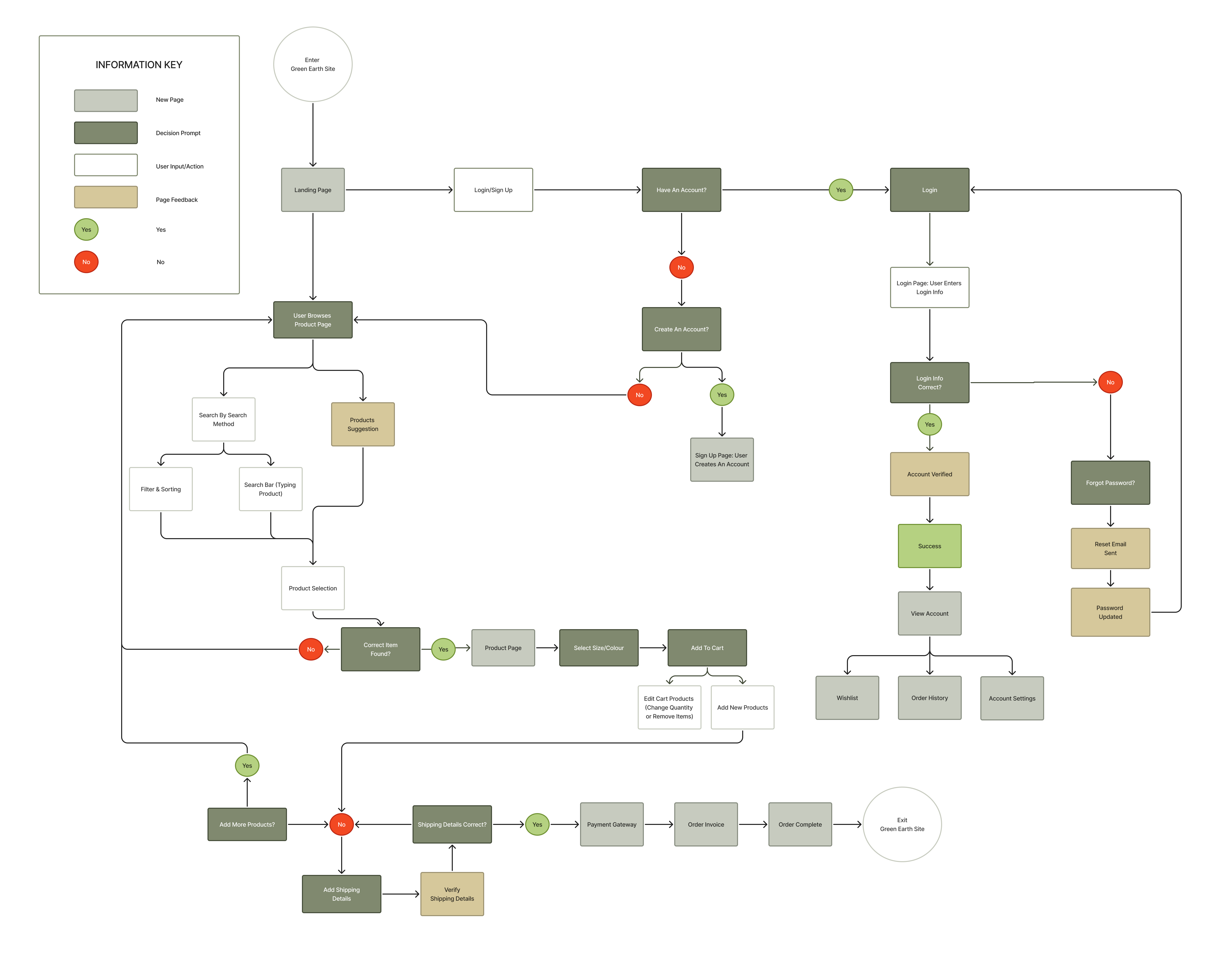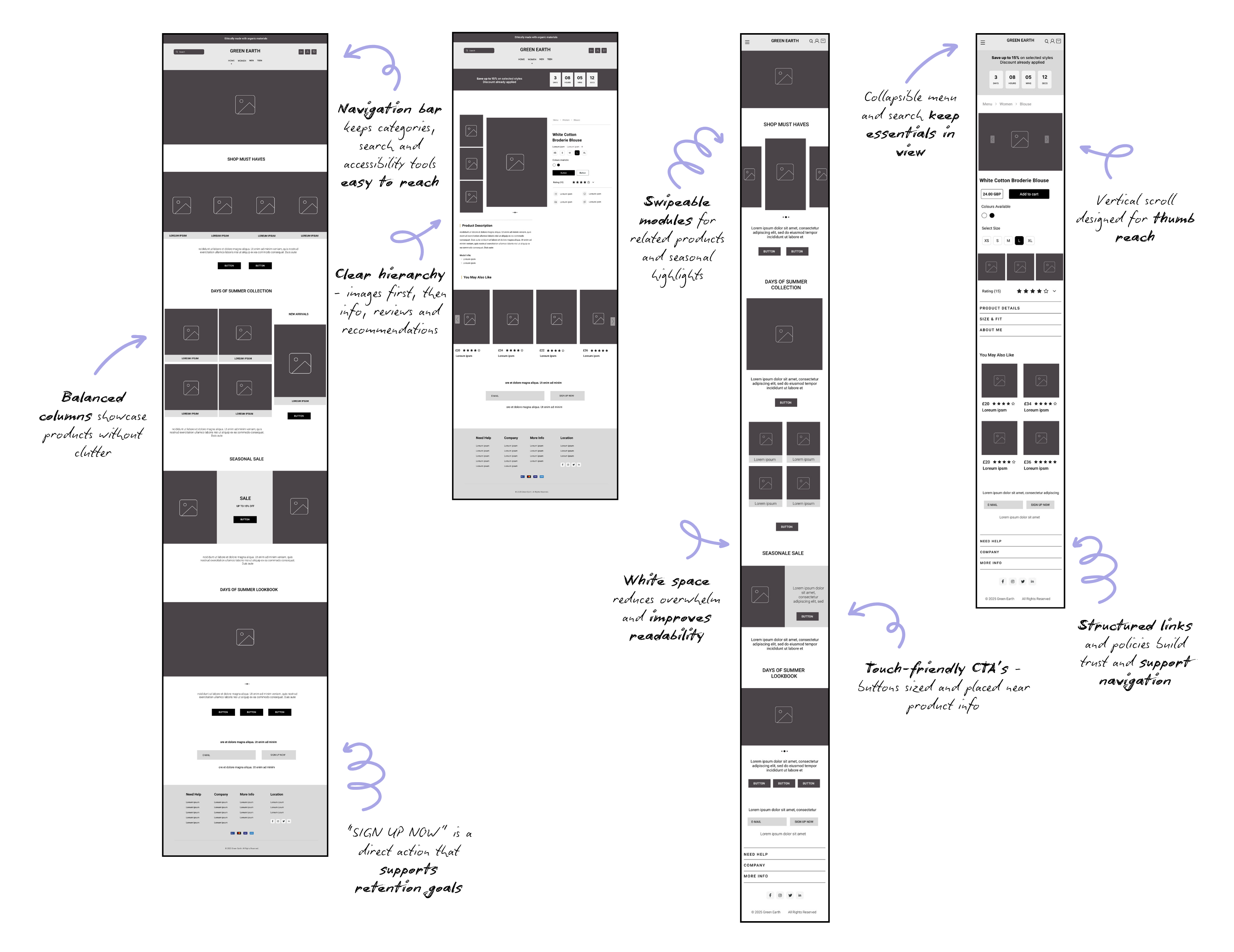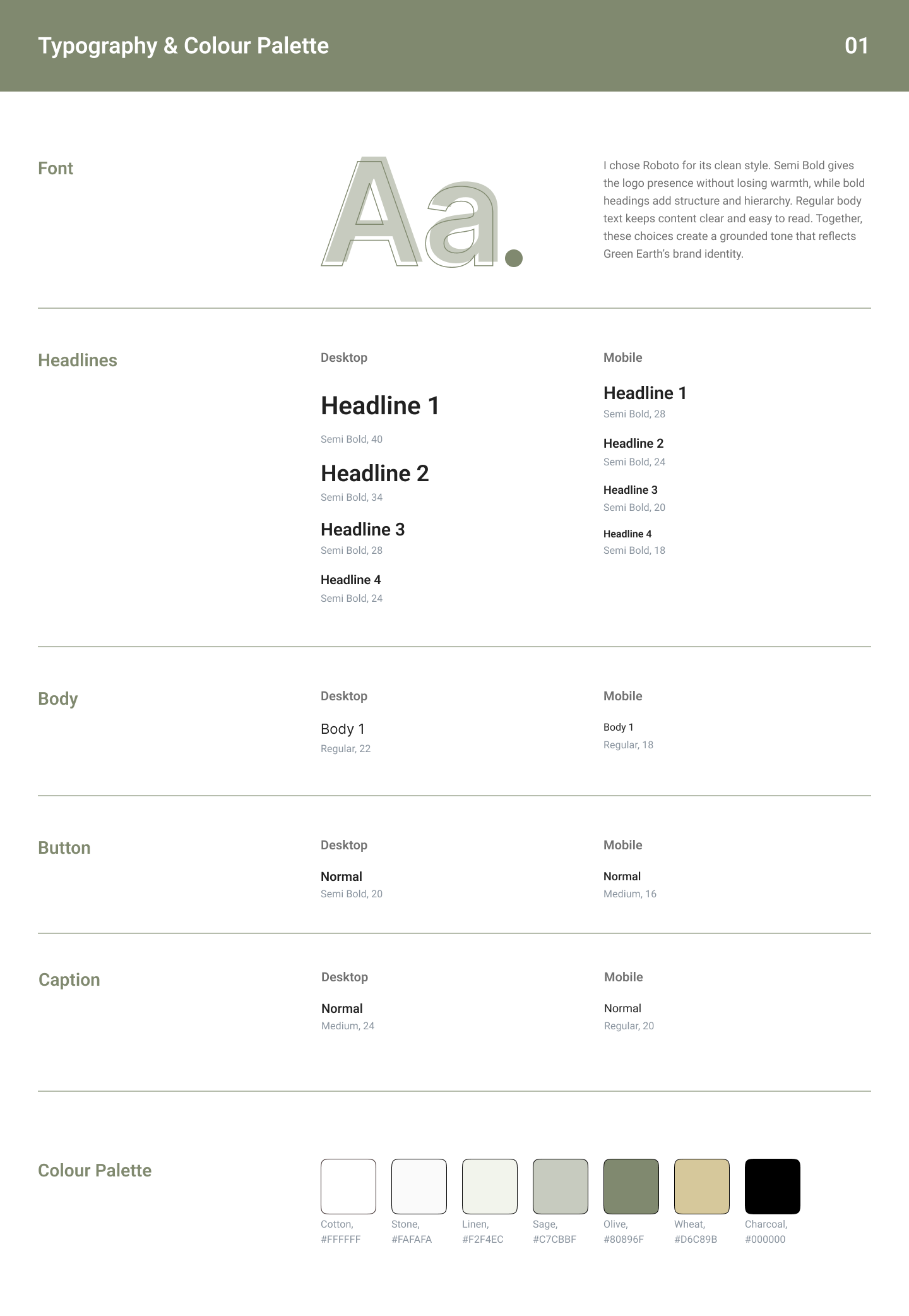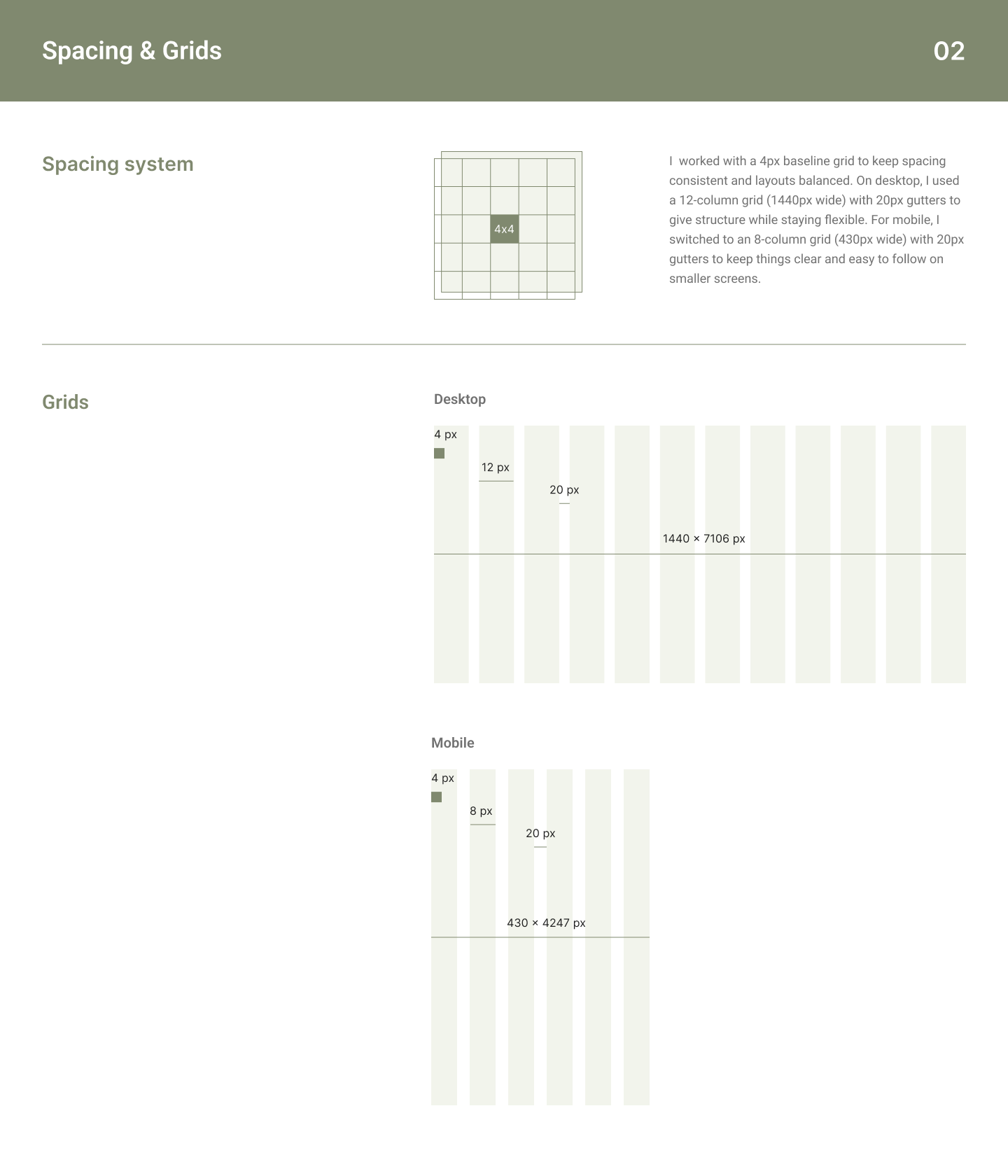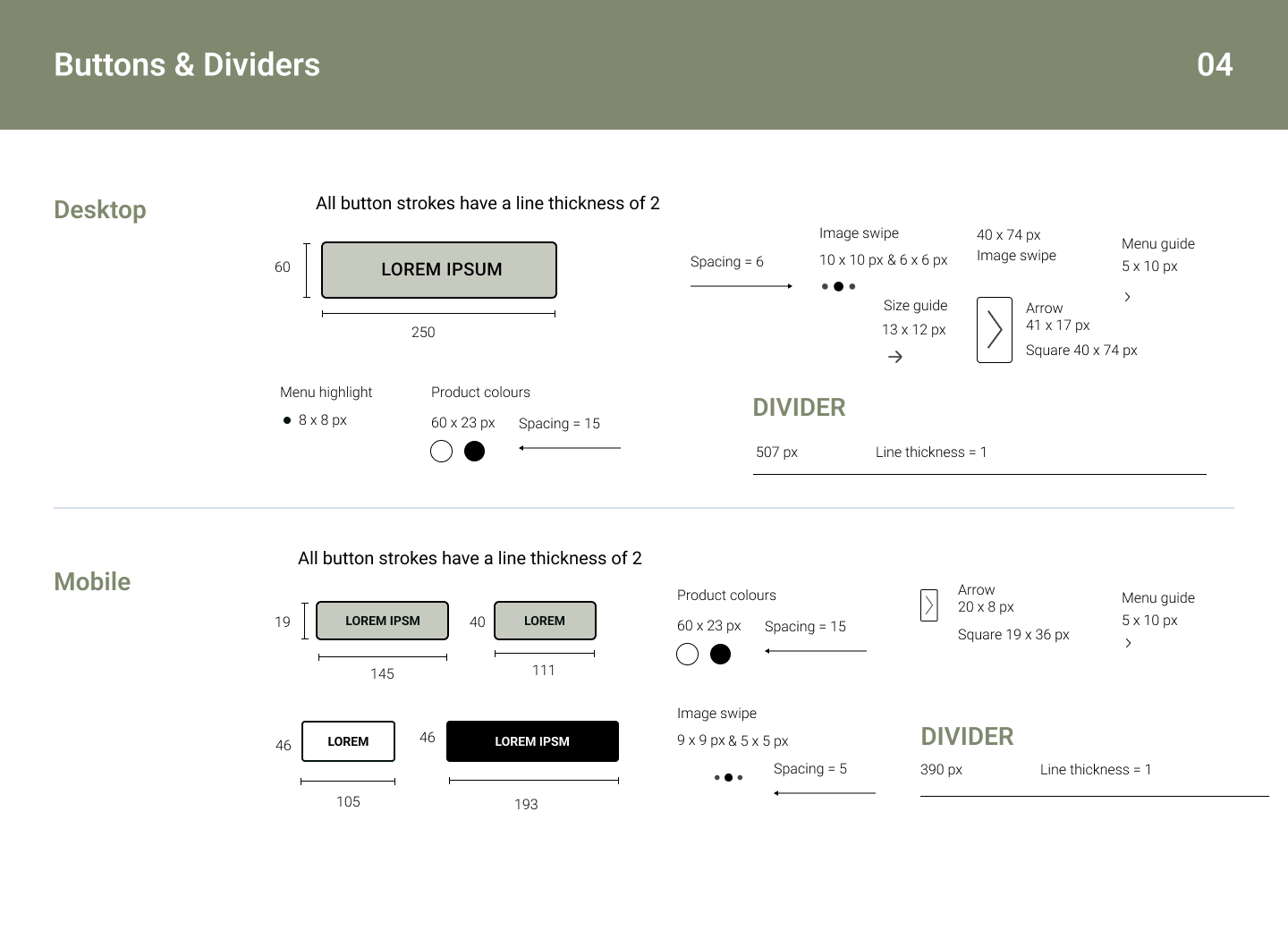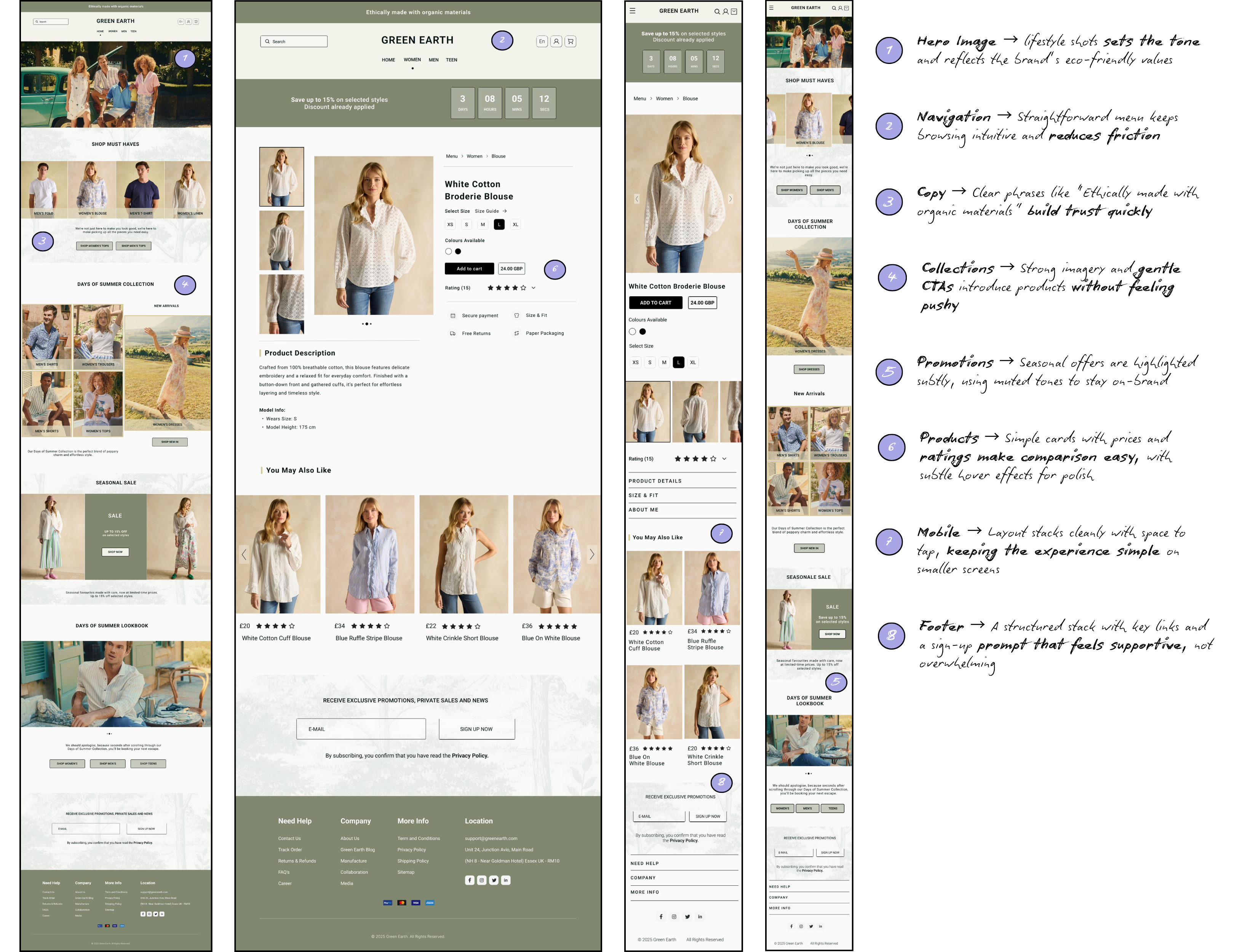To ground the visual language, I created a mood board that guided all choices
across layout,
imagery, colour and tone.
My goal was to make every element feel connected, creating a
journey that aligned with how Green
Earth customers see
the world, through a lens of care and clarity.
When someone lands on the Green Earth site, I want them to feel like they've entered a calm,
welcoming space. A place that reflects who they
care about. Through thoughtful colour choices, intentional typography and emotionally resonant
imagery, this design speaks to more than just
fashion, it tells a story of conscious living and everyday ease.
The final result is a digital experience that's grounded, human and aligned with the brand's
mission, from the first scroll to the final click.
Sustainable fashion concept
Green Earth
This project began with a question: how do you design for ease, not just function?

